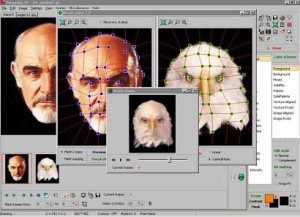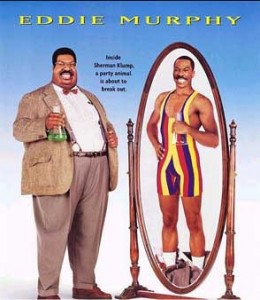A really bad attempt at doing a human to monster transformation (first time i've ever used adobe after effects)
Maybe more scared
Special Effects
What are special effects?
Types of special effects.
Technology used to create special effects.
What are special effects:
Special effects is both, an art and a science: In this, science parts involves in understanding that how human begins perceive the world around us through sound and visual sensory part of body and brain.
Persistence of Vision: When related still image sequences are passed in front of human eye with a particular speed (min. 15 frames/sec.), human brain perceive that it is a single image with movement i.e. it perceive second, third images as a continuation of the first image. This phenomenon happens because nerve impulses are slow as compared to light speed.
Principle of Motion Pictures: Persistence of vision is the base for principle of motion pictures. In motion pictures, camera, lights, audio, computer generated objects (CG) and other visual media exploit this phenomenon.
What is motion: Motion of an object is the continuous displacement of the object in space with reference to another object. This phenomenon is the basic for compositing technology.
Types of special effects:
Computer Effects:
- Blue/Green screen
- Computer Animation
- Compositing
- Morphing/Warping
Humanized Effects:
- Use of Latex
- Rain
- Snow
- Wind
- Fire
- Blood bags/Bullet Hits
- Explosion
Computer Effects: These are those effects, which are generated with the help of computer technologies. Some effects are as follows:
Blue/Green screen: In this technique, blue/green screen is used as a background in a scene. This scene will easily overlap on another scene and blue/green background will be removed with the help of compositing software’s. Blue / Green Screen is a special kind of compositing, where the mask is calculated from the foreground image.

Compositing
Computer Animation: Computer generated animations are used with real footage (camera scene) with the help of compositing software. E.g. Gollum (which is totally CG character) in ‘The Lords of the Rings’.
Cartoons Frames: Here cartoon character is used with real footages (movies). Best example is ‘SpaceJam’.

SpaceJam movie
Physical Models: In this technique physical model (mechanical robots) should be used to depict the character. Best example is ‘Jurassic Park’, ‘Godzilla’ etc.

In this undated image released by Stan Winston Studio, Stan Winston is shown working on a dinosaur for the film, "Jurassic Park". Winston, the Oscar-winning special-effects maestro responsible for bringing the dinosaurs of "Jurassic Park" and other iconic movie creatures to life, has died. He was 62. He died at his home in Malibu surrounded by family on Sunday, June 15, 2008, after a seven-year struggle with multiple myeloma, according to a representative from Stan Winston Studio.
Compositing: It is a technique by which one shot is super-imposed on another, resulting in a composite shot.
Morphing: Morphing is a special-effects technique that creates a smooth, controlled transformation of one image or movie into another.

Morphing of a female face to male

Morphing of Man face into Eagle
Warping: Warping essentially the same as morphing, except it uses only one image or movie.

Warping
Humanized Effects: Those effects, which are generated manually. Such type of effects are as follows:
Use of Latex: Latex is a material which use to make monster out of human or simple for scars on the faces, extra eyes on monster head, it can make young people old and vice versa. Best example is movie ‘The Nutty Professor’, ‘Lord of the Rings’ etc.

The Nutty Professor

Orcs character in Lord of the Rings
Rain: In special effect (computer generated) rain, you find it difficult to wet the cloths and other surroundings of a character. So film maker use original rain, production people use a long plastic tubes with tiny holes in the bottom, and attached it with water hose and with this setup they create a rain sequence. Isn’t it interesting?
Snow: For snow, snow machines are available which help in creating snow for your shots.
Wind: For wind, production people use large fans with high speed and create good wind effects.
Fire: For those scenes, which require massive fires, production crew calls experts, which create huge fire shots with the fire machine, which easily turn on massive fire scene, but can also turned off it in a matter of pressing a button.
Blood bags/Bullet Hits: When a person hit by a bullet in movie, blood burst out from his/her body. It is achieve by a small explosive charge, which is triggered by a battery causing a blood-filled bag to burst outwards. 9V battery is used to burst a squib (Firework consisting of a tube filled with powder that burns with a fizzing noise), which has to place under the shirt of character. On a plate, a squib is place that is triggered by a 9V battery. And above this squib a blood pack with red color liquid is taped. Cable is run from the squib down the actor’s leg to a control box or nail board.
Explosion: Some times when CG (computer generated) explosion is not that much effective, and if you need realistic look than special machine i.e. Pyrotechnic machine is used to achieve this kind of effects.
Technology used to create special effects (Softwares):
- Autodesk Combustion
- Autodesk Inferno
- Autodesk Flame
- Autodesk Flint
- Adobe After Effects
- Digital Fusion
- Elastic Reality
- Boris FX
- Hollywod FX
Why use special effects?
- Movies would be really slow, boring & basic without special effects.
- Society likes entertainment.
- We can create endless possibilities and bring dreams, illusions, and fantasies to life.
Conclusion:
- Special Effects have revolutionized the way we are entertained, they have made movies almost seem so real.
- The Revolution of Special Effects in movies has just begun; the best is yet to come.
-
Why only 2 seconds of Transformers 2 has had 3 months to complete
About six months ago, Michael Bay approached Digital Domain, the Academy Award winning special effects company behind movies like Benjamin Button, Titanic , and the The Fifth Element, with a last minute request. He needed a closeup.
Digital Domain was already working on some secondary characters for Transformers 2 while George Lucas' Industrial Light and Magic building the main robots like Optimus Prime. Yes, Transformers 2 had such a big budget that DD was hired just to ride shotgun.
One key moment of DD's handiwork depicts the transformation of a girl named Alice—played by actress Isabel Lucas—into a lethal robot. The main shot, seen above, uses digital techniques like advanced particle simulation (physics) to tear 10,000 pieces of skin away from a girl's body—the kind of high-concept graphics that require lots of software know-how, and computers to do incredible amounts of heavy lifting. It was the sort of shot that showcased everything DD could do.
When Michael Bay saw it, he found it lacking.
After watching an early edit of the movie, Bay had decided that although the wide shot of Alice was nice, the film was missing a close-up—he wanted 40 frames of the girl's face as she began transforming.
The close-up wouldn't take as much as the full-body master shot. Instead of 10,000 pieces of skin, only about 50 had to move. But because of time, budget and manpower constraints, this animation had to be done the old-fashioned way—working by hand. It meant that five guys would spend the next three months of their lives on less than two seconds of the finished film.
Computer graphics supervisor Paul George Palop walked me through their process of crafting the "very, very painful" 40 frames.
The goal sounded simple: Transform this closeup of a human into a closeup of a robot. Alice's face would begin to shatter away, revealing a gruesome creature underneath. But to model in 3D over digital film takes some prep work. To make the effect look real, the guys would need to map the 2D film original shot into digital 3D space. Then they could add all the neat robot stuff.
First, the DD team cut out all of the background and extraneous objects (including Shia LaBeouf's head), isolating the female figure. It's the first step of a classic technique known as rotoscoping, a trick that predates Disney, in which animators overlay cartoon characters and other animation on top of live action backgrounds. (Now that CG has blended humans and cartoons, it's probably safe to say that there isn't an FX-heavy movie made now that doesn't involve some kind of rotoscoping.)
With the basic 2D work done, DD used a laser scan of Lucas' figure to create a perfect 3D map. The rotoscope plate was then laid over this map, allowing the animators to work with real image depth and geometry. We don't have that exact shot, so we stole a still from the later wide shot to make the point. On the right, you have the 3D body scan model. On the left, you can see the 3D applied to the 2D figure.
One artist worked solely on the little skin plates that cracked away around Alice's mouth. Each of these 50 or so pieces was hand-animated, frame by frame, to create the short effect. But to enhance the illusion of movement, artists applied extra texture to the tiles along with some displacement mapping to each tile's edge, which essentially complicates the square shape into an array of small triangles. (See how they look all jagged in the version on the right?) One the 3D-animated shapes were laid out, they had to be naturally lit, lest the girl's skin look unnatural before she transformed completely into a metal monster.
In the meantime, the exact movements of the human Alice head needed to be applied to the newly animated robot Alice head, so that any movement from the former could be copied instantly in the latter.
Finally, all of the pieces were composited, rendered and placed on a newly drawn background. You'll notice that beyond the obvious visual effects, artists beefed up Alice's figure a bit. They rebuilt the end of her left arm and, while they were at it, added a bit more lift in the back of her hair. Even with a blockbuster megamovie deadline, there's always time for last-minute styling.
After all of this meticulous work—three months of effort from digital effects masters—audiences everywhere got a bonus 40 frames of remarkable robotic transformation. Ironically, one of the movie's chief complaints would be its length.







